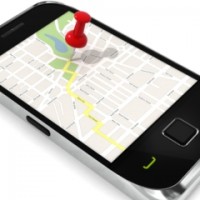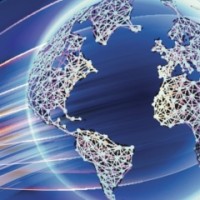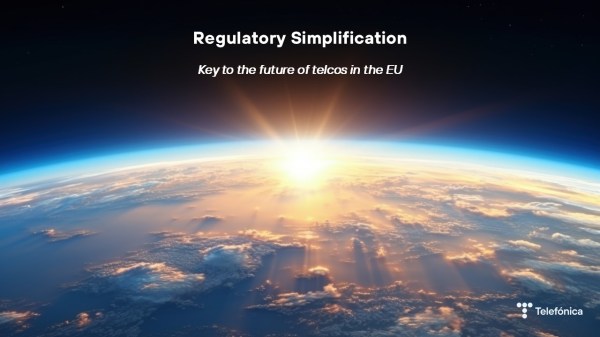Telefónica Public Policy & Telefónica España Regulatory teams
 Services in the Digital Economy are much more than “downloadable Apps”. The key sectors of the economy will ALL be touched by connectivity and by going digital. This article looks at some of the key opportunities that may provide 21st century benefits in our transport sector, particularly if we take a longer term “roadmap” view towards 2020 and the “Internet of Things”. Such opportunities arise when we harness innovation, shared R&D/ economies of scale and relevant regulation such as the EU ITS Directive.
Services in the Digital Economy are much more than “downloadable Apps”. The key sectors of the economy will ALL be touched by connectivity and by going digital. This article looks at some of the key opportunities that may provide 21st century benefits in our transport sector, particularly if we take a longer term “roadmap” view towards 2020 and the “Internet of Things”. Such opportunities arise when we harness innovation, shared R&D/ economies of scale and relevant regulation such as the EU ITS Directive.
However, when we talk to customers and partners they rarely use the language of Intelligent Transport Systems or “ITS” but often talk about what they want in service or Digital Economy terms. Others relate to the “Internet of things”, and new ways of doing business. The implementation decisions in 2011 around the EU ITS Directive (including eCall) will need a longer term services and investment vision, or risk business models being purely short term and constraining future services. Many of the services below may not be catered for. Sustainable business models for safety also need to be complemented by some of the other services listed. We also see a gulf between Automotive and Communications based RTTE EU directives and their underpinning standards/ certification arrangements. These are not all the services below for the next 10 years but representative examples. Any transport architecture needs to support these and allow evolution. This may start with the technology of today (eg GSM/Wifi/ Bluetooth/GPS) but allow migration towards others (eg 3G/4G/Galileo + V2V). The list below assumes existing as well as new cars/vehicles, and existing/new roads, but based on evolution not revolution.
For Connected Car services I see the following main issues:
1) Safety
- Breakdown rescue
- E Call or equivalent
- Integrated car safety (based on driver behaviour and alerts)
- Safety instructions/alerts
- V2V and V2I mechanisms (Vehicle to vehicle, and vehicle to infrastructure)
2) Support
- Journey planner
- International roaming – voice/data
- Car company/garage alerts (eg MoT, Maintenance reminder, product recall)
- Online access to maintenance records (per car or per vehicle range)
- “Internet on wheels” (advice, anytime anywhere)
- Internet broadcasting
3) Navigation
- Maps in real time
- “Internet on wheels” – points of interest, hotels/restaurants, broader info on the move
- Congestion/accident alerts/rerouting advice
- Weather/road condition alerts
- Electric vehicle guidance (fuel refill)
- Preferred city routes /parking guidanc
4) Security
- Asset tracking
- Immobilisers for cars as we see already in Brazil/China
- Theft alerts
- New or elderly drivers
- Vehicle identity – IP address per vehicle, for enhanced tracking/security and licensing
5) Efficiency
Fleet management/tachographs
- Fuel/energy management
- PAYG driving (new insurance models)
- Pollution measurement
- Usage guidance for driver behaviour and car share schemes
Many other services could be envisaged in this transport based “Internet of things”, with many more connected vehicles, but the architecture must allow evolution of services and the best use of existing technology now. Regarding “Connected roads /ITS” services we need to consider other factors as these services have a high dependency on connected street furniture, new communications technologies, sensors and the Internet, as well as the number of Connected Cars. Services could all be made more efficient if linked within a digital infrastructure strategy including:
- Automated Traffic flow measurement
- Digital Traffic demand modelling and new approaches based on cellular and other data sources
- Transport Network Management for the Digital Economy based on 1 and 2, with Digital Traffic controls
- Lighting and camera/CCTV controls – based on growing digital machine or M2M connectivity and management
- Intelligent road signs. Both 4 and 5 need to be part of a DSO (connected or digital switchover programme)
- Connected Weather /pollution/ environmental sensors need to be part of the architecture for investment and real time services.
- Parking technology. Move to online information, parking availability in real time and paperless/cashless parking.
- Toll technology
- Road user charging
- Congestion or area charging
- Public Information services
- Incident and evidence notification from the public
Some of these are services for the public but many of these could also be for the government, with a view to offering appropriate controls and reducing capital expenditure. In a world of less Public Sector capital, transport policy will need to have a framework and architecture that allows for these services, perhaps with a rebalancing of public/private capital. With ITS/Connected Roads, better partnerships with the private sector are needed for some of the above. This in turn has a high dependency on getting the Connected Cars architecture right, and assuring international collaboration (at least with Europe) on this agenda. The ITS Directive/E Call “next steps” offers a strong pathway to doing this but the EU cross sector collaboration (incl. FP7/FP8) needs to be energised more strongly to deliver effective results and many of the services listed above.
 Dr. Mike Short, Vice President, Telefónica Europe
Dr. Mike Short, Vice President, Telefónica Europe
Other interesting information on the topic:
Telefónica, Ericsson launch Connected Car project
Caring Cars, Aplicaciones de Salud y Bienestar en el Automóvil









